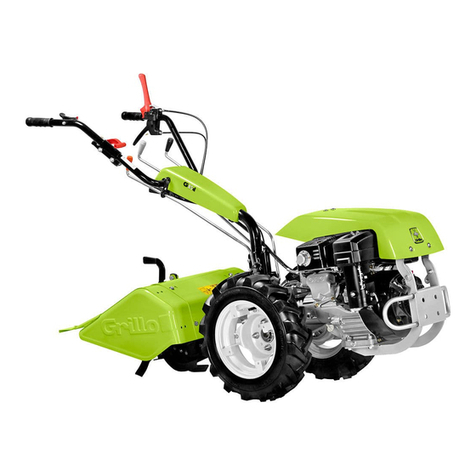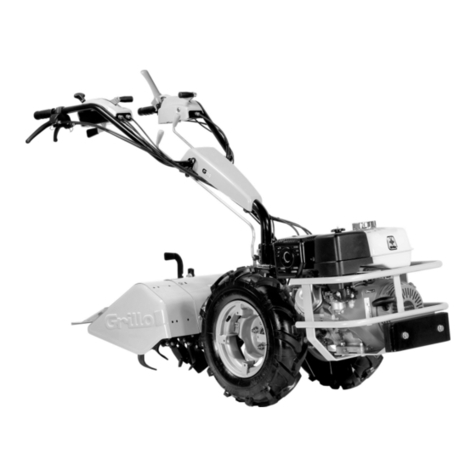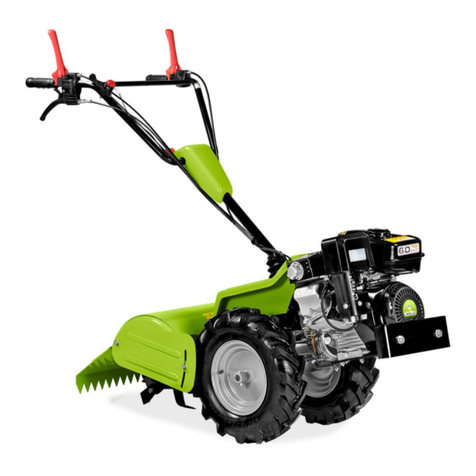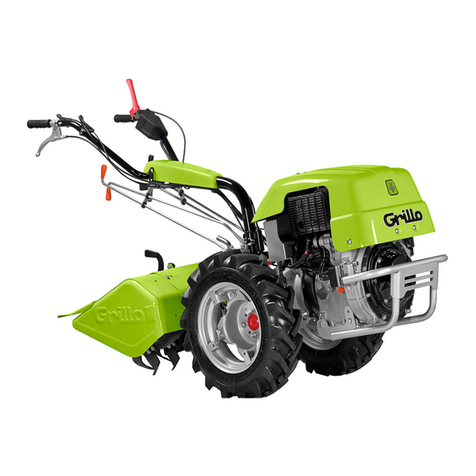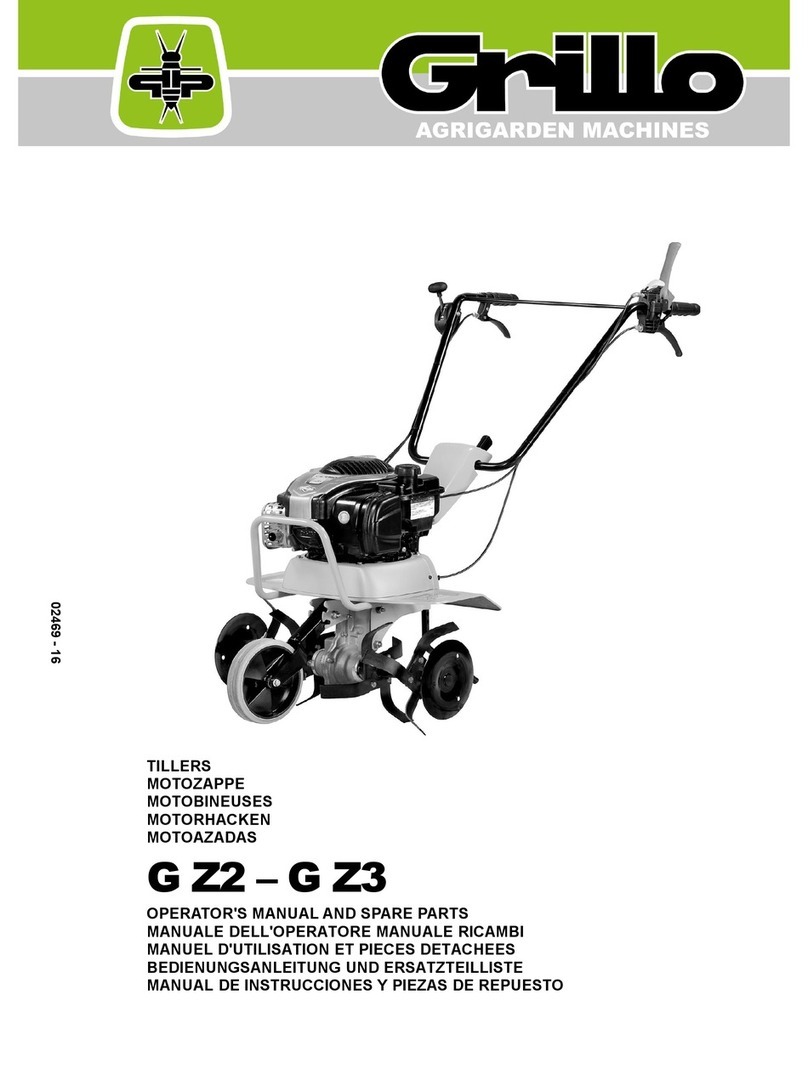5
”GRILLO 11500” MOTOR HOE
Dear Customer,
Thank you for choosing a Grillo cultivator. We are sure that our machine’s performance will satisfy you
in all respects.
For the best results and maintenance over time, read this handbook carefully and follow the instructions
to the letter; this will also avoid unnecessary expense.
Keep this handbook with the machine at all times.
CAUTION! Read this carefully before starting the engine
The following precautions are important to avoid injury!
ACCIDENT PREVENTION RULES
Taking care is the best way of preventing accidents!
Read these warning carefully before starting work.
Improper use of the cultivator and its equipment may be dangerous; to reduce such risks, always adopt
all the precautions listed below.
1) Read this handbook right through before starting up the cultivator or putting it in motion.
2) Pay special attentions to the warnings and safety labels on the machine.
3) When running, the cultivator head is extremely dangerous. Never place hands or feet under it.
4) Before allowing other people to use the cultivator, instruct them about the safety regulations and how
to use the machine.
5) Before starting up the cultivator check that there is no-one in the vicinity, particularly no children.
6) Never use the cultivator when tired or after drinking alcoholic beverages.
7) Check the terrain before tilling, ensuring that there are no stones, sticks or foreign bodies which might
damage the machine or be flung away, creating a serious hazard.
8) Wear suitable working clothes, gloves, boots and goggles.
9) Never use the cultivator on steep slopes as it may tip over.
10) Never allow anyone under the age of 16 to use the machine.
11) Never reverse with the engine at high rpm.
12) It is dangerous to operate the levers sharply with the engine at high rpm.
13) Never keep the engine running indoors; you may breathe in poisonous fumes.
14) Always switch the engine off before filling up with fuel. Keep away from sparks or flames and do not
smoke!
15) Take care not to spill fuel, and after filling the tank wipe all spills off the cultivator before starting the
engine.
16) Never tamper with or disactivate the safety devices.
17) Never make any types of adjustment or do any cleaning with the engine running.
18) Never have anyone check the machine while you are in the driving position with the engine
running.
19) The user is always responsible for all damage or injury to third parties.
20) In case of any improper use the warranty becomes null and void and the manufacturer declines all
responsibility.
21) Misshapen or damaged hoe blades must be replaced, and never repaired.
22) Always use original Grillo spare parts.
23) Before starting any work with the machine, check that all its accident prevention systems are in
perfect working order. Users are strictly forbidden to disable or tamper with them.
24) Before starting work, check that the nuts and bolts securing the cultivator head and hoe blades are
perfectly tight.
25) All protective equipment (housings, mudguards etc.) must be kept in place during cultivation.
26) Never clean the cultivator head with the engine running.
27) Never use the machine with bare feet.







